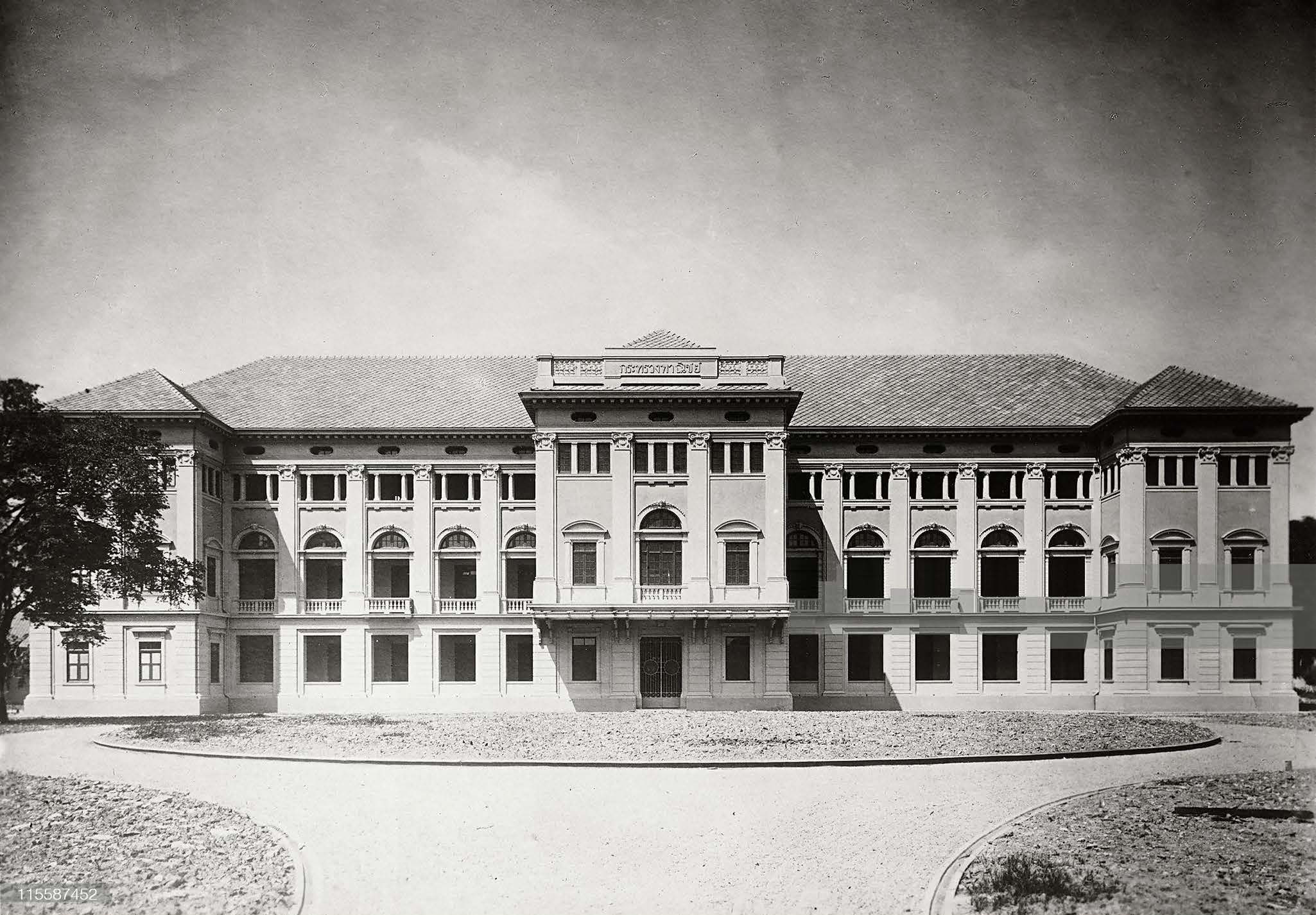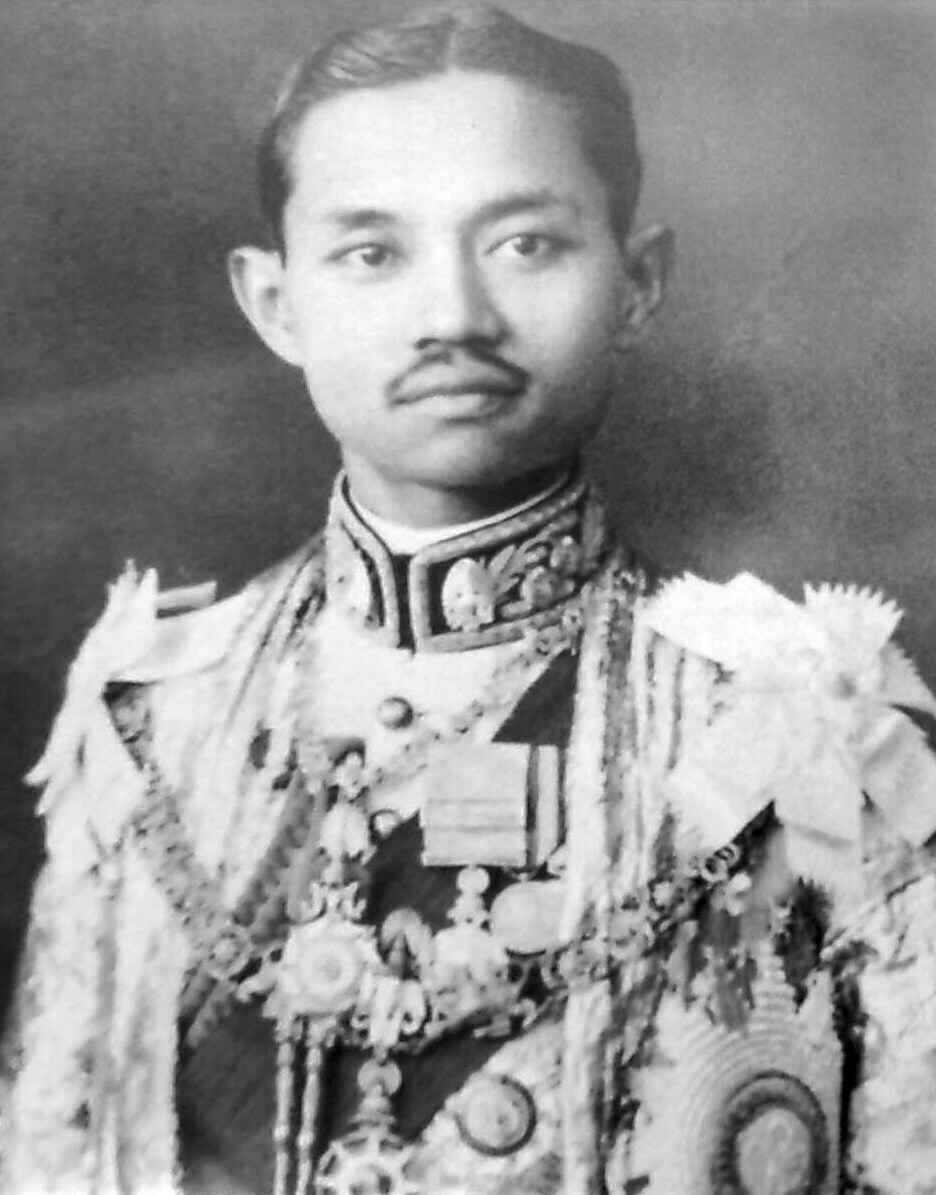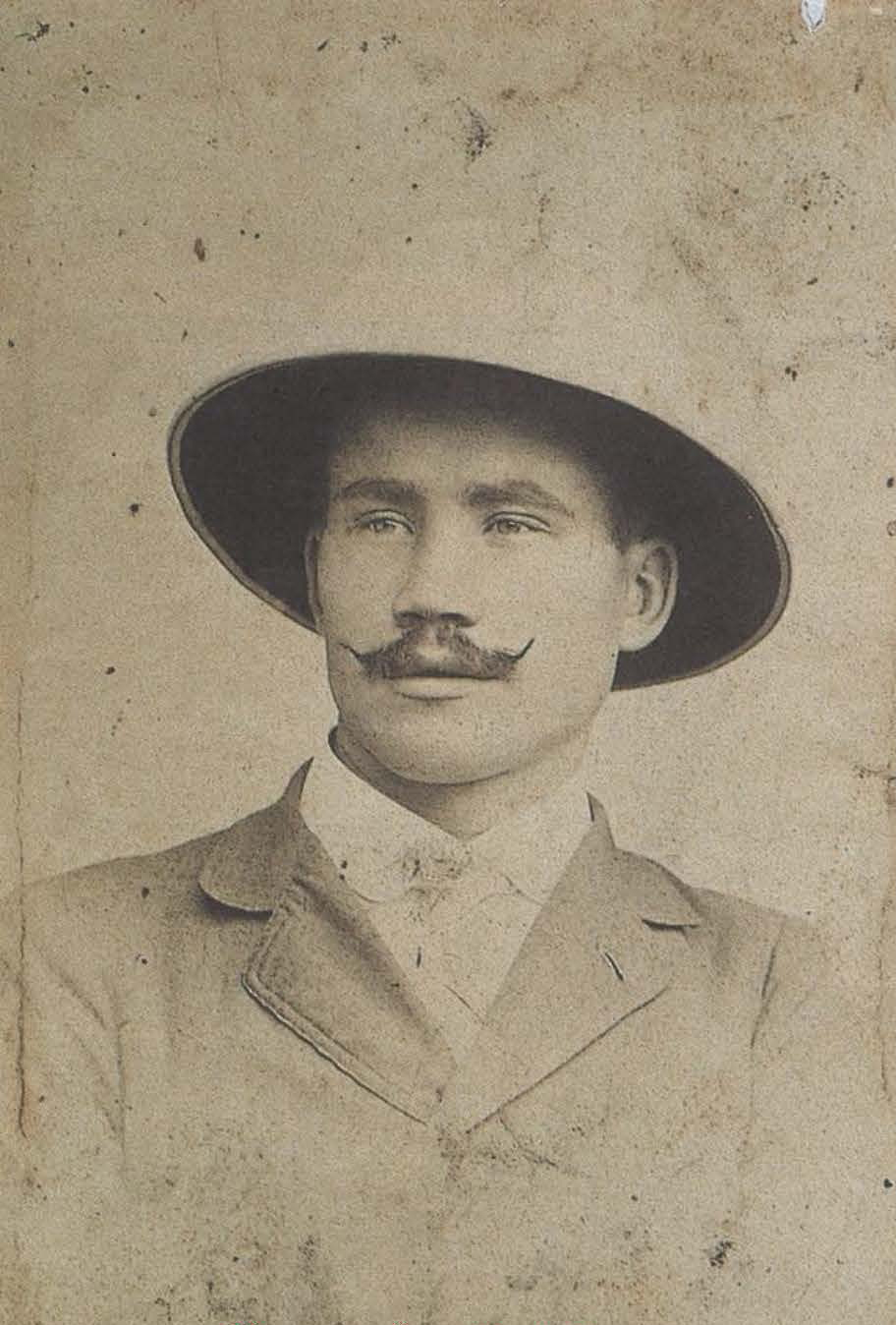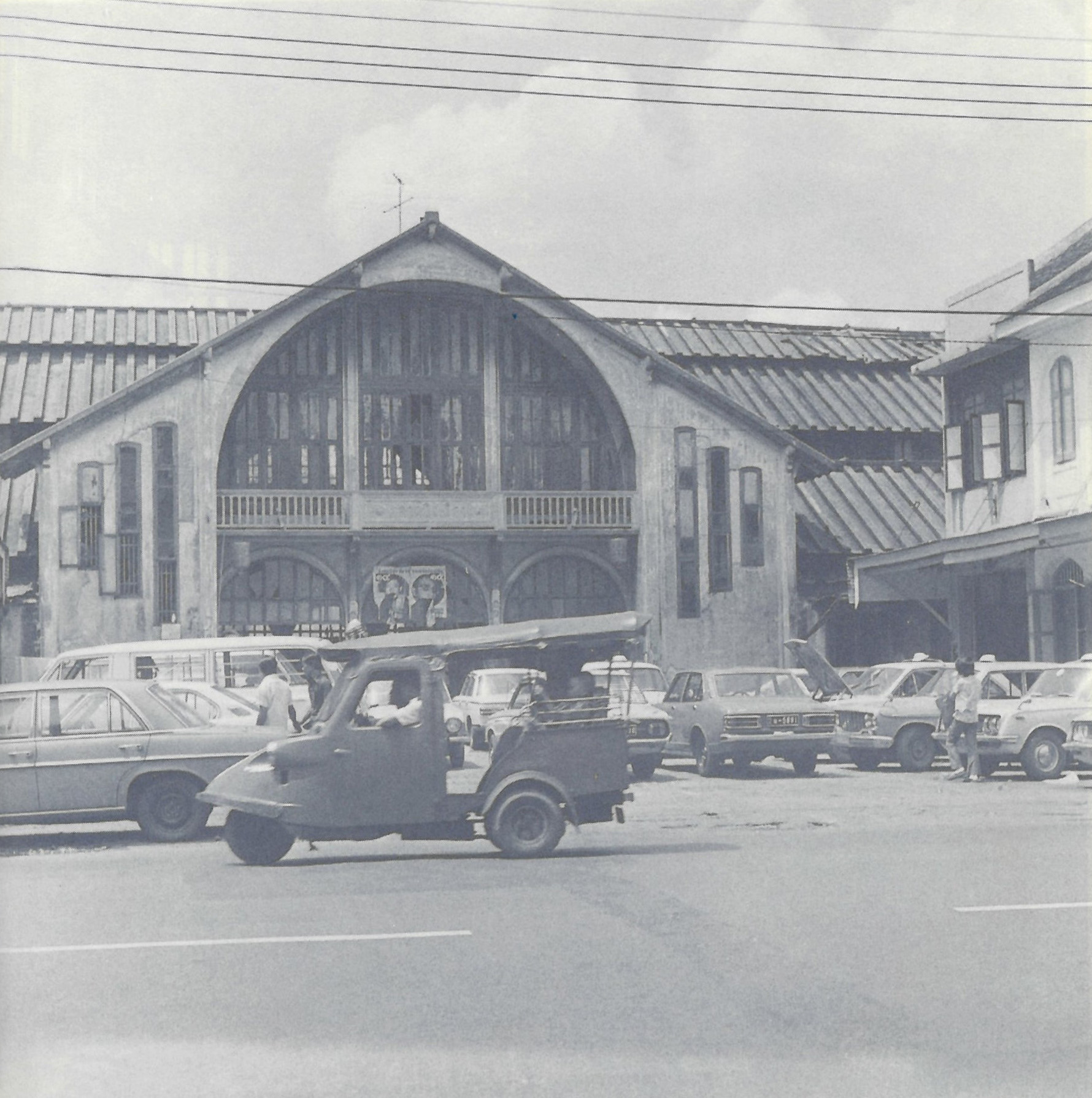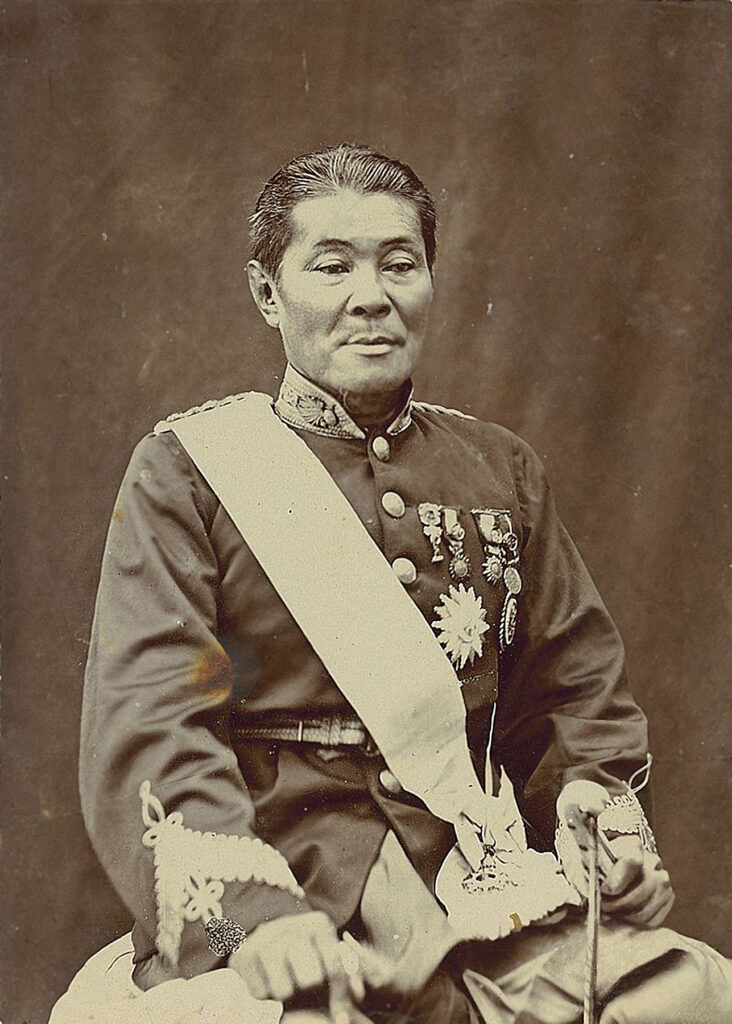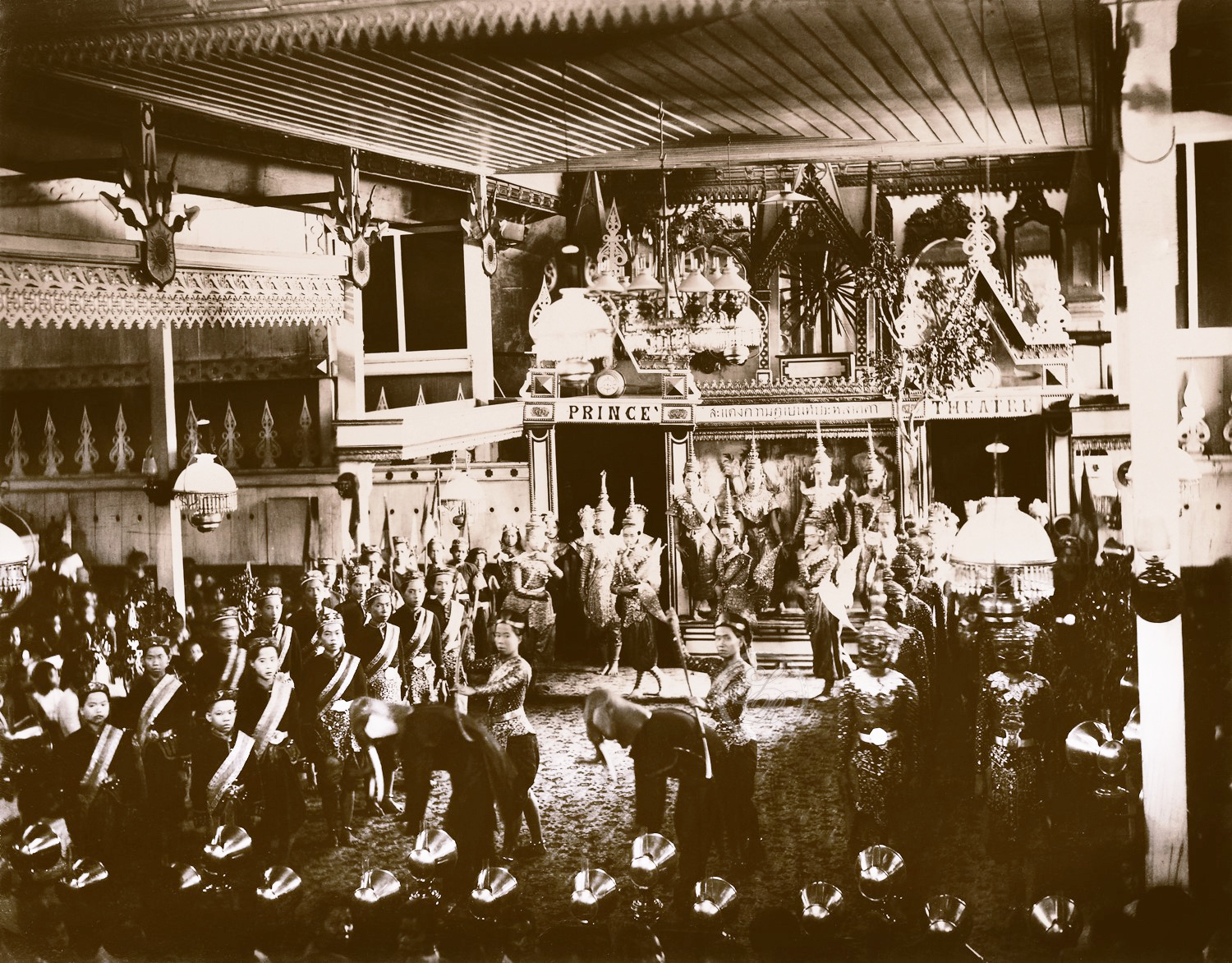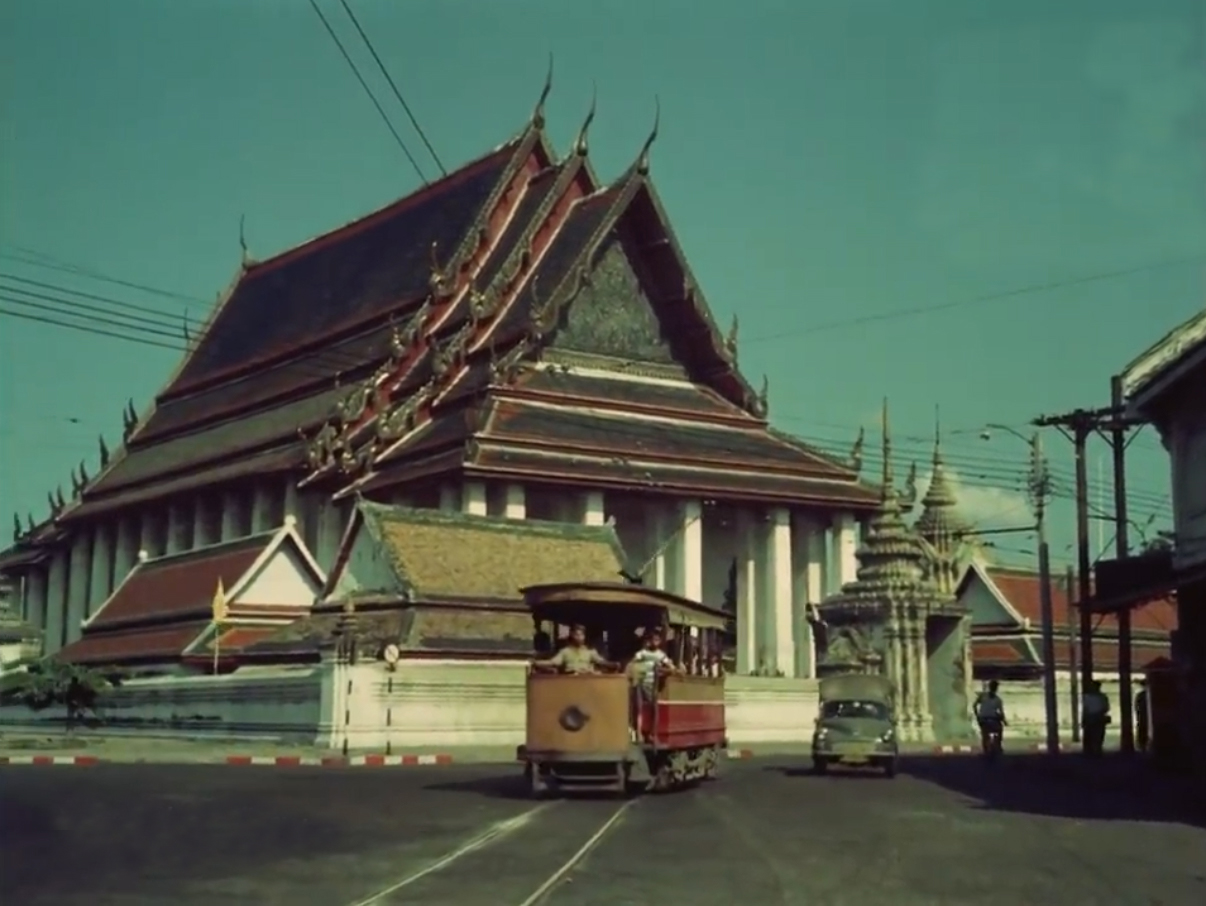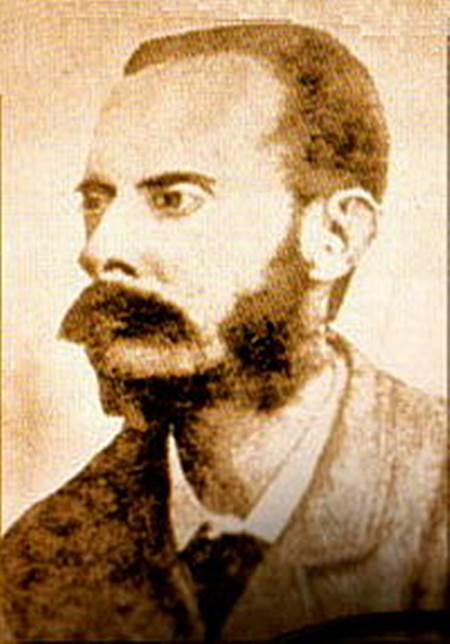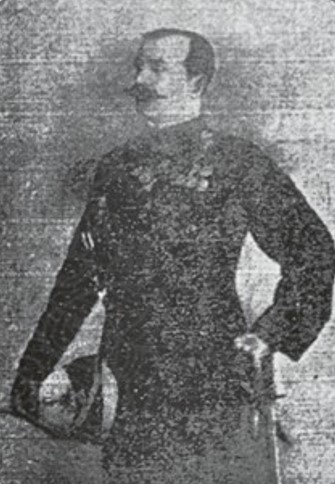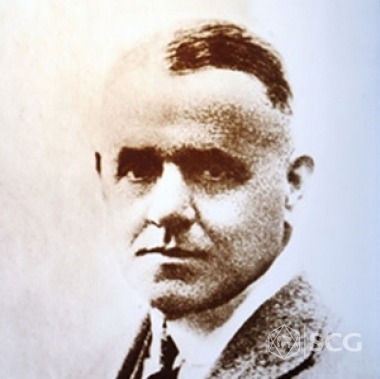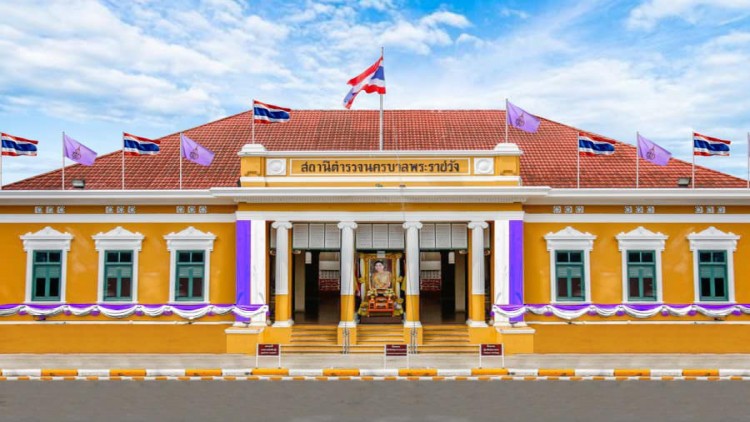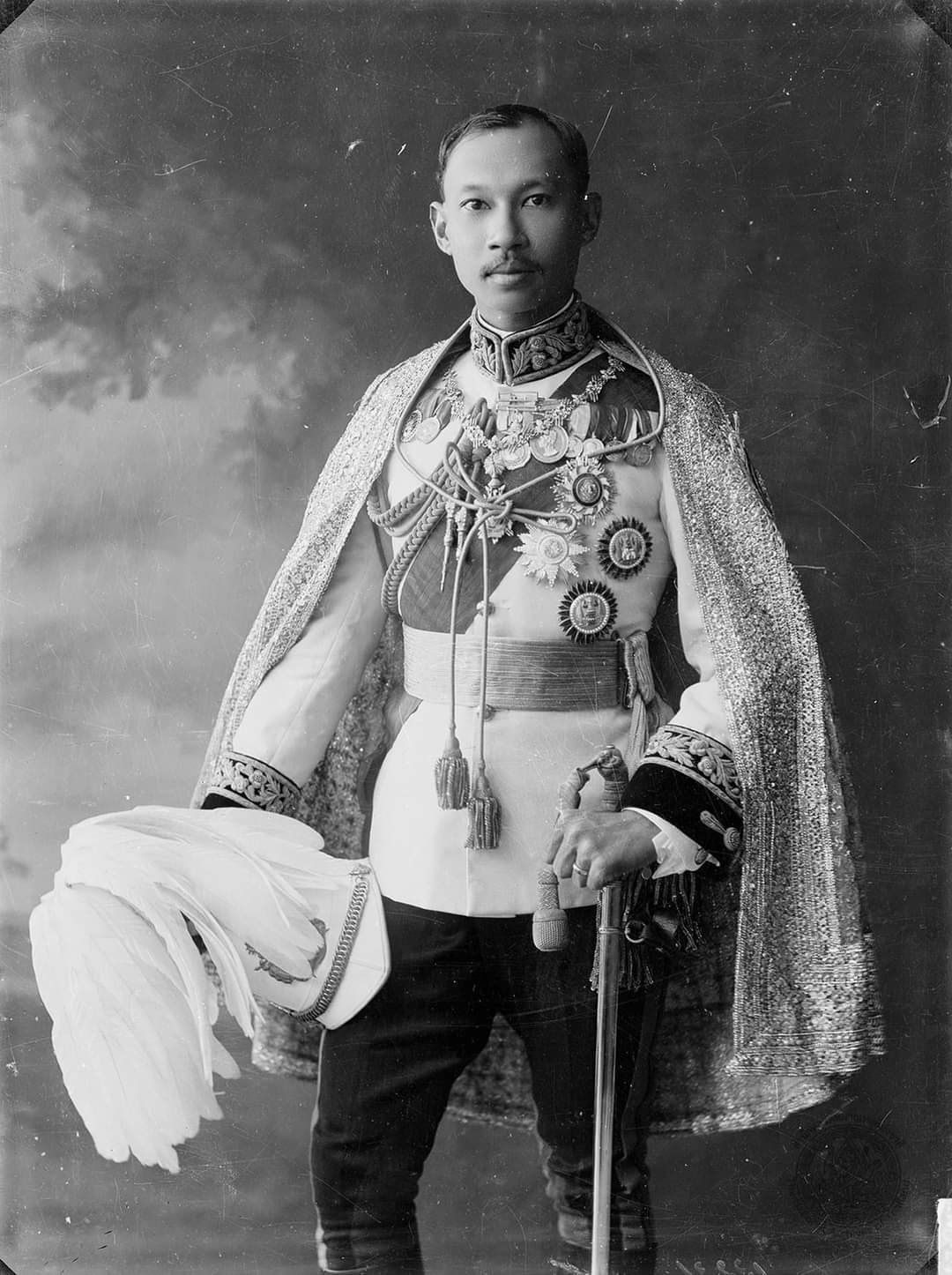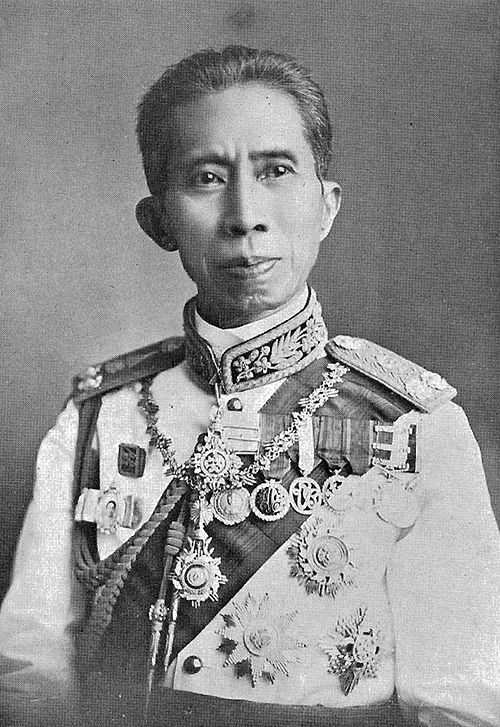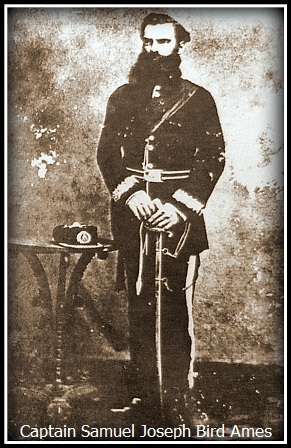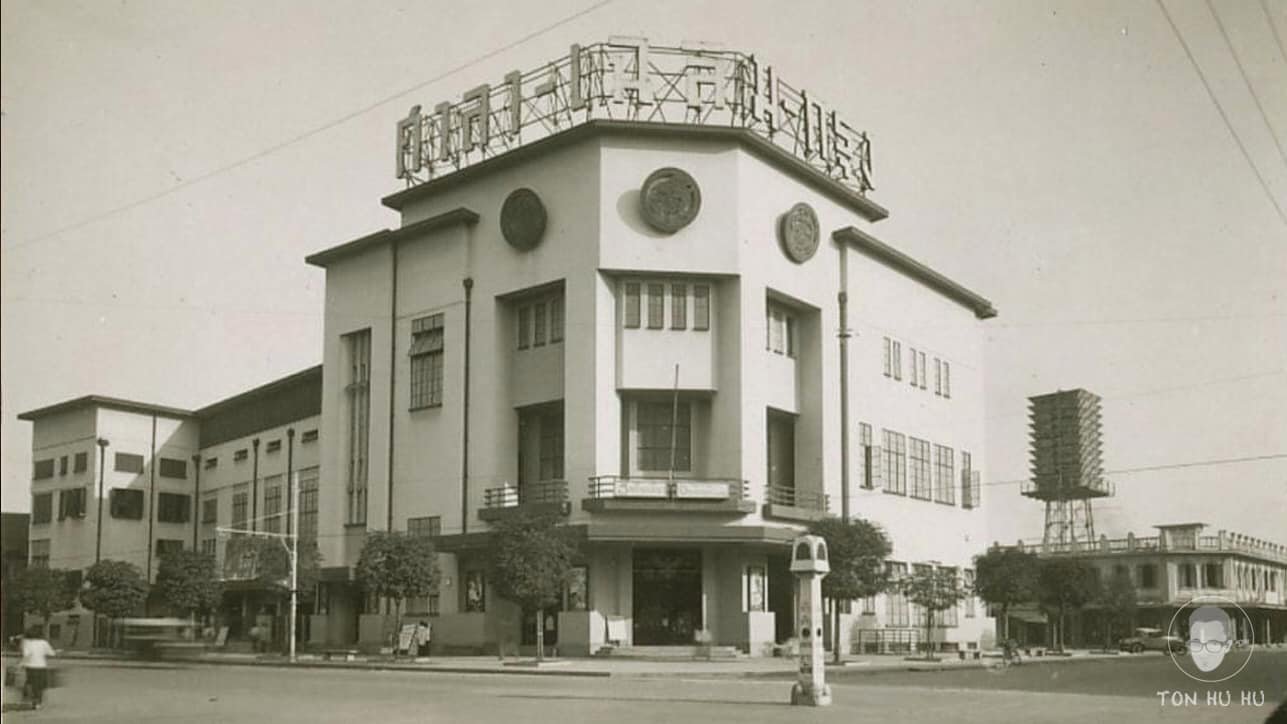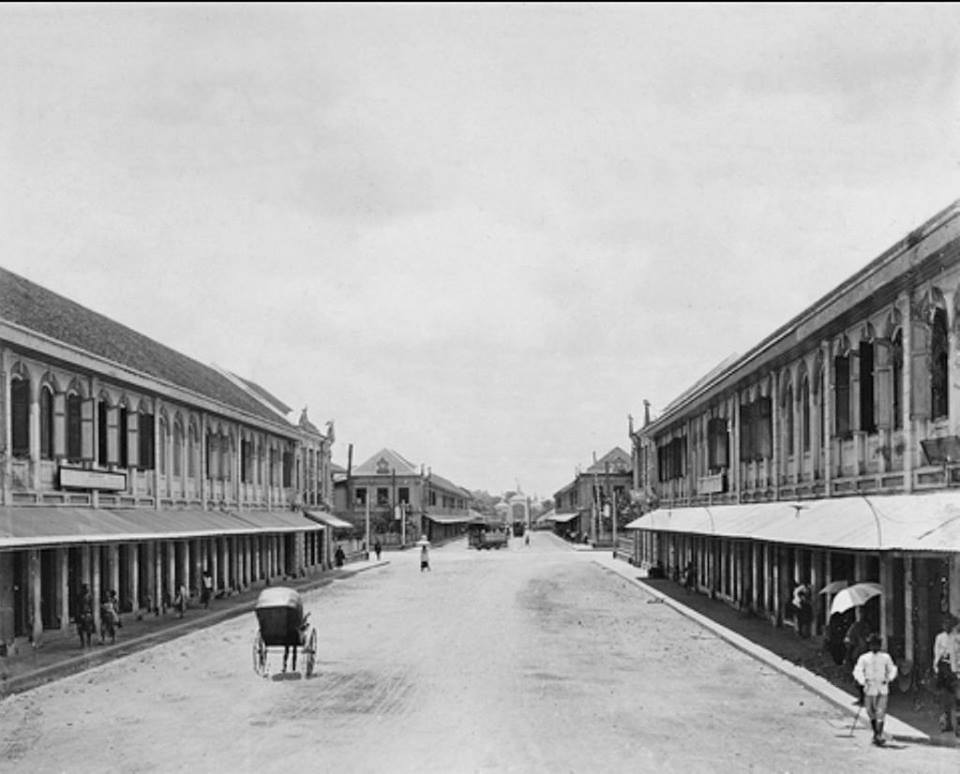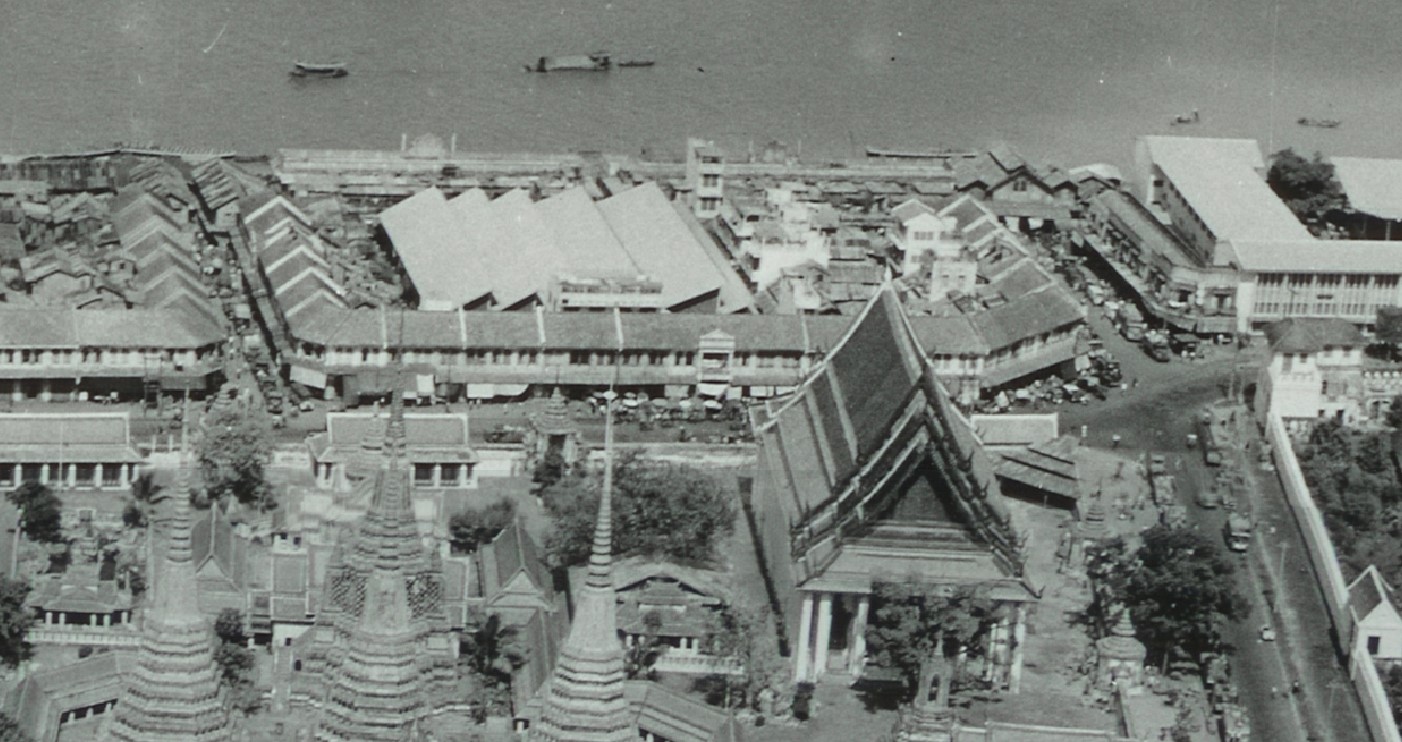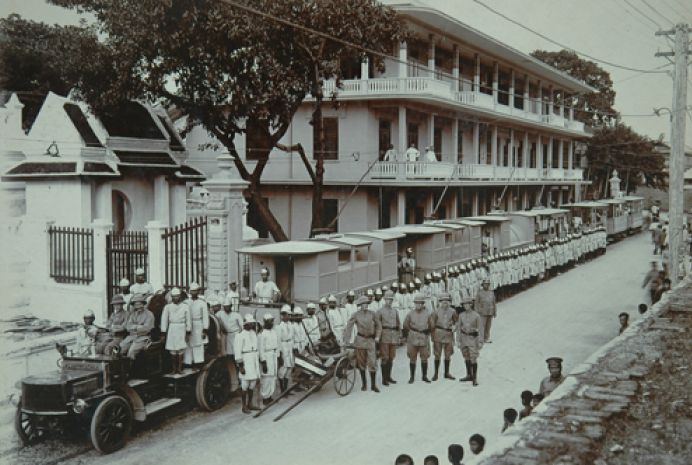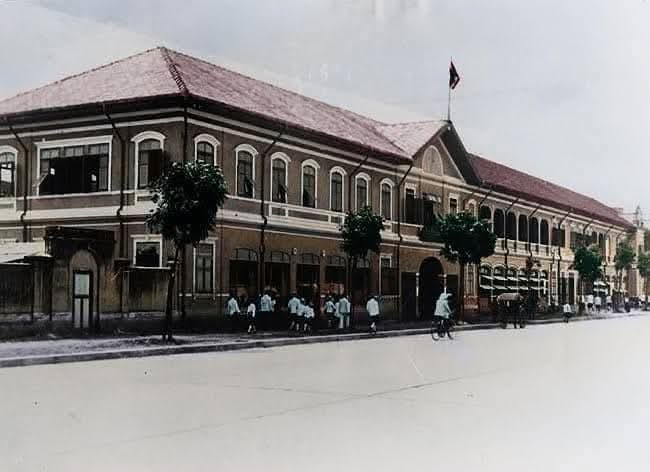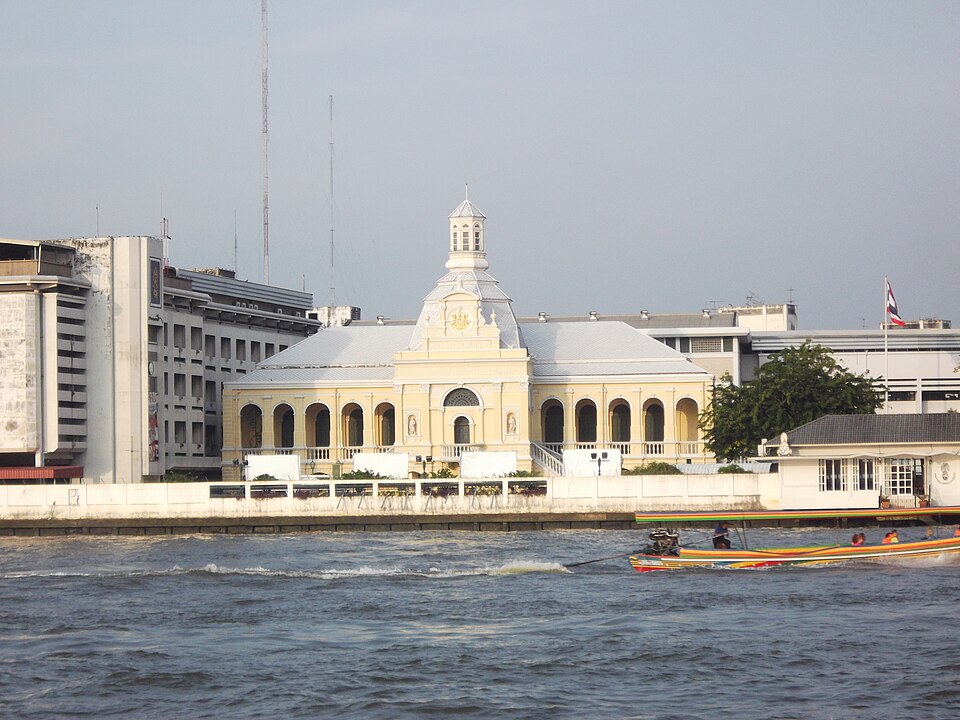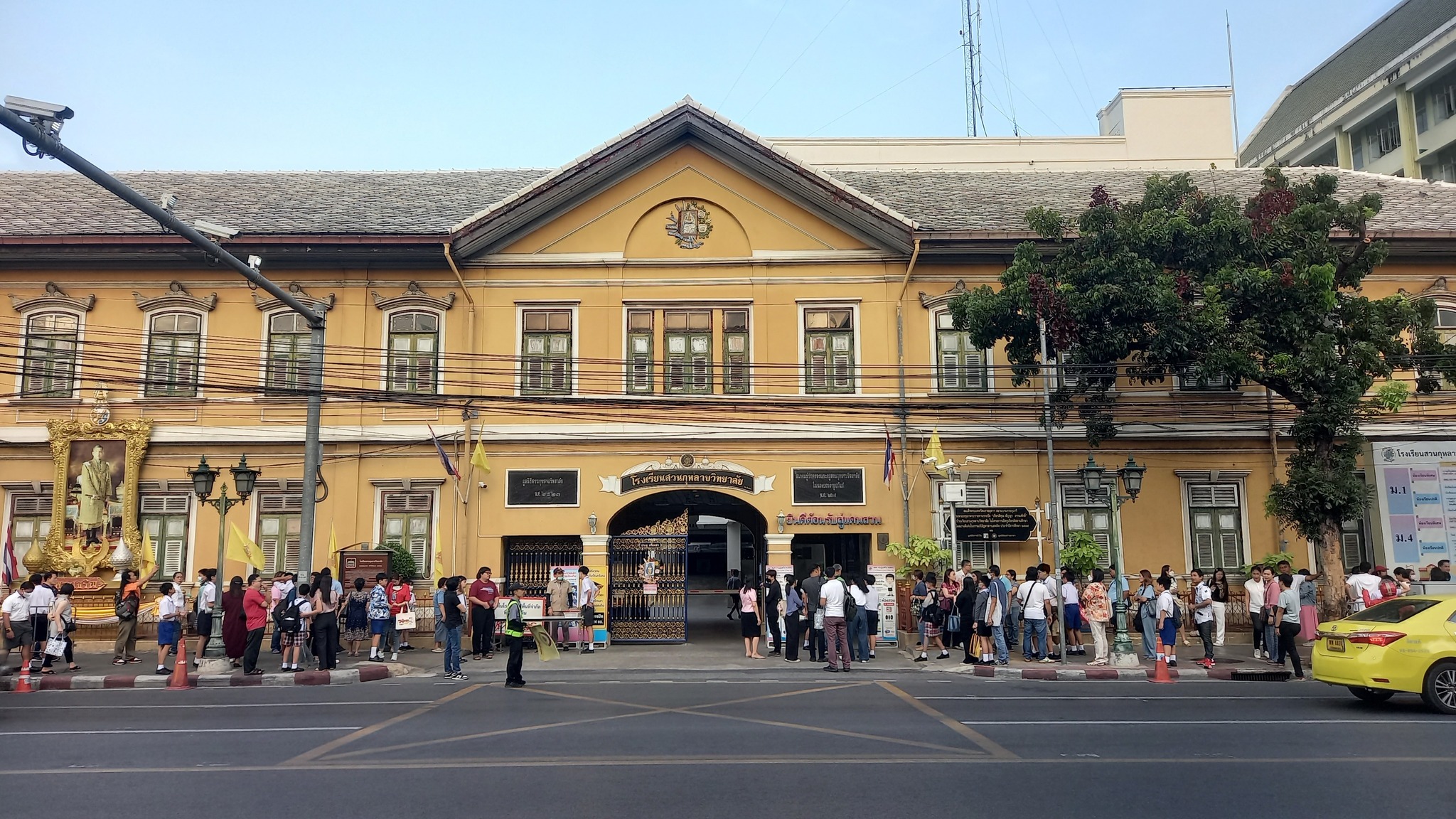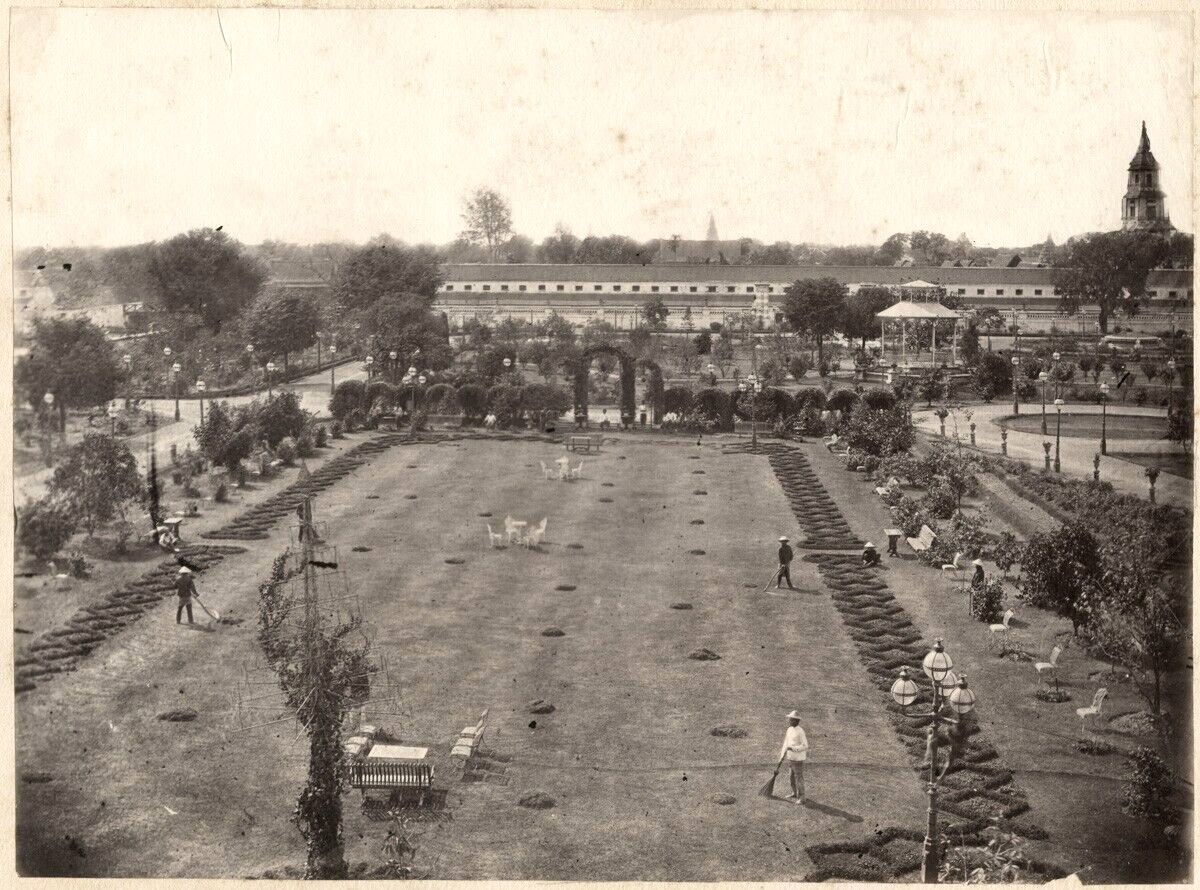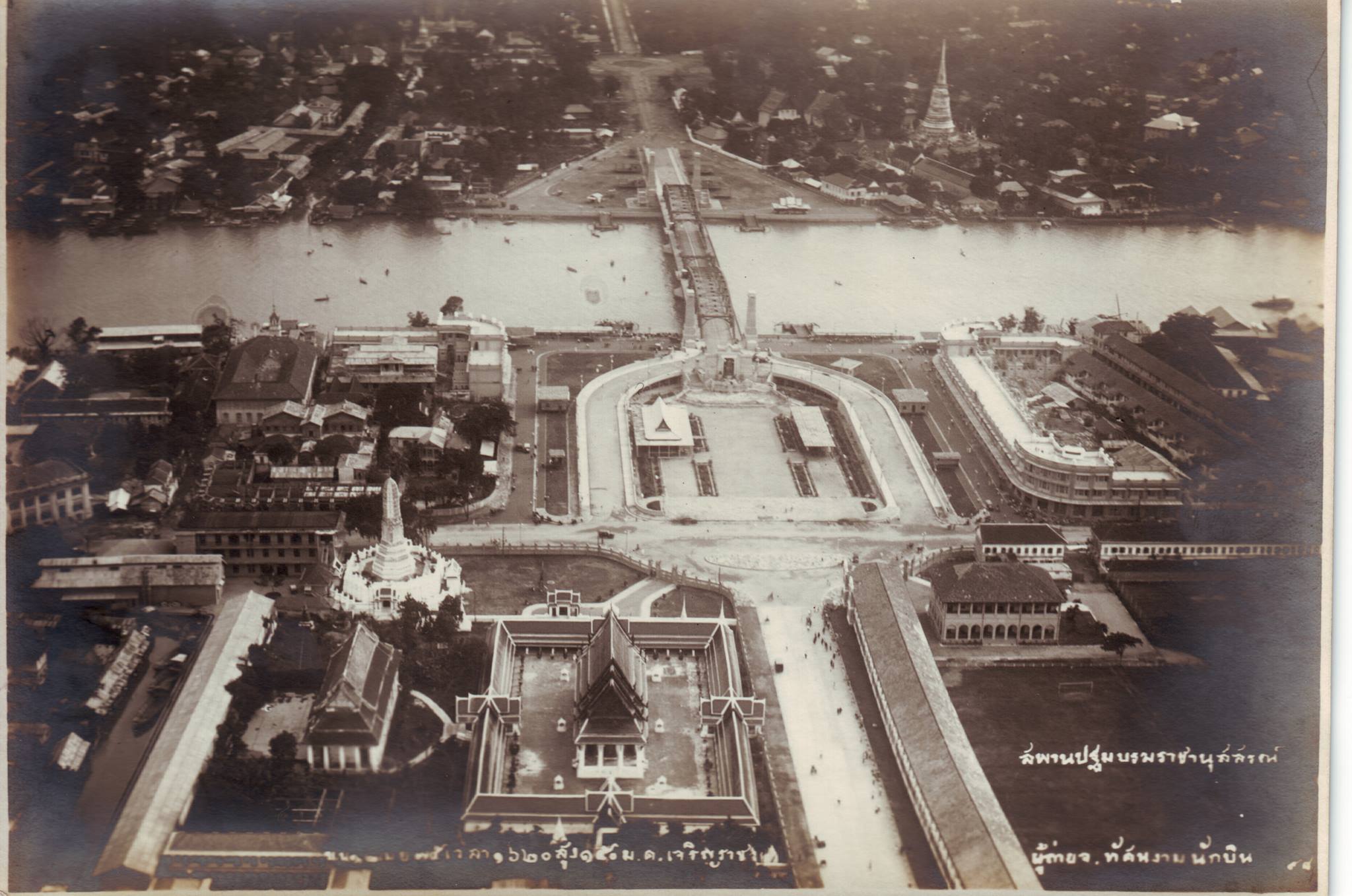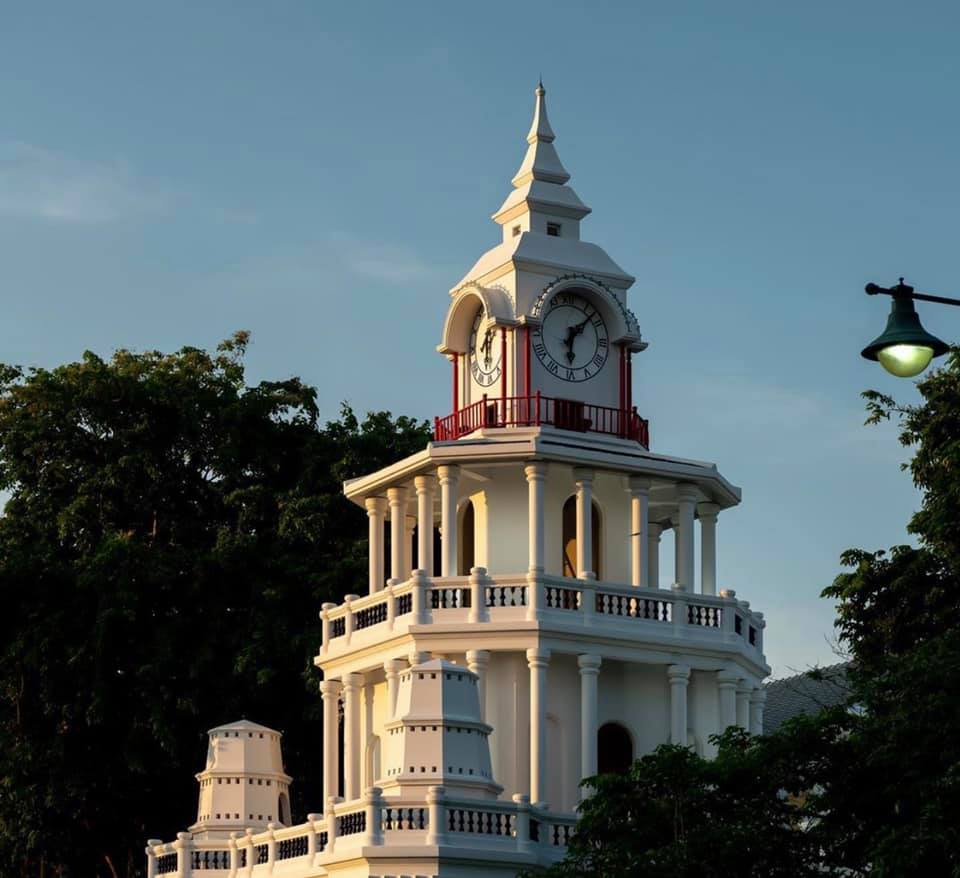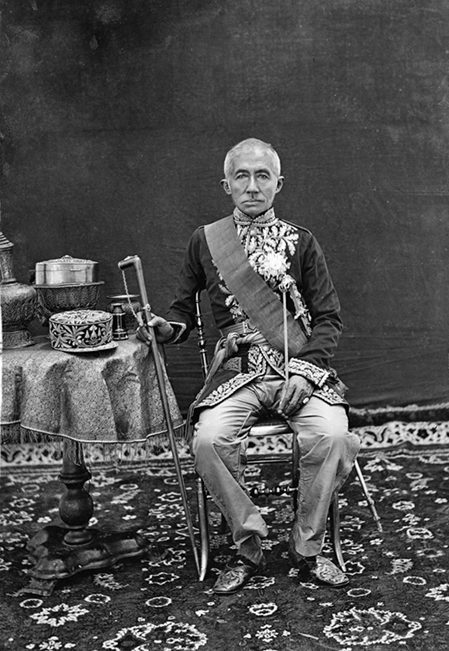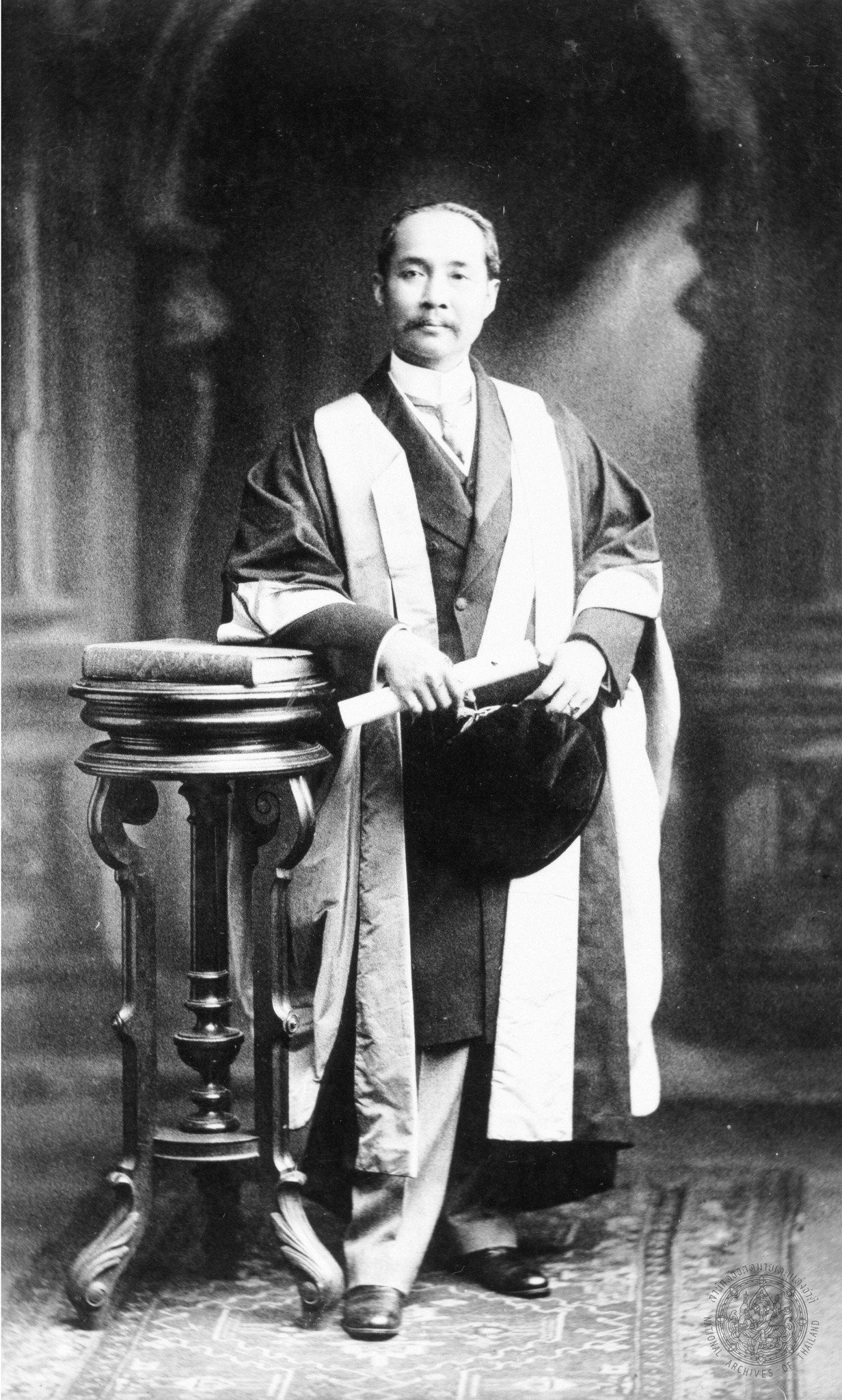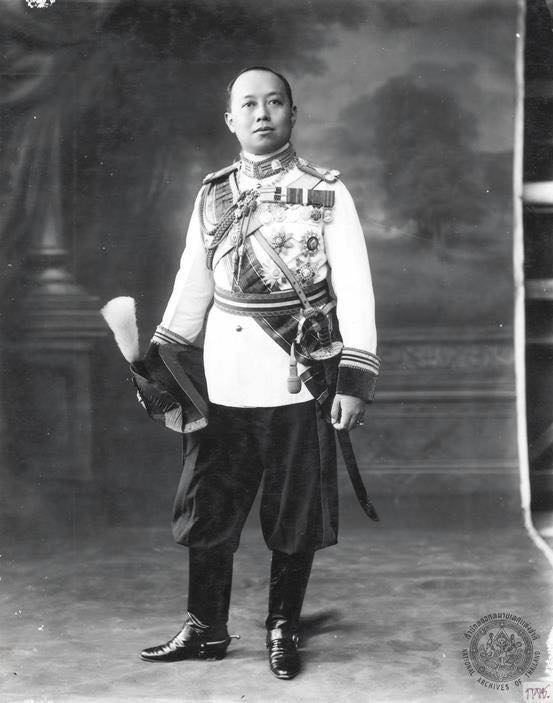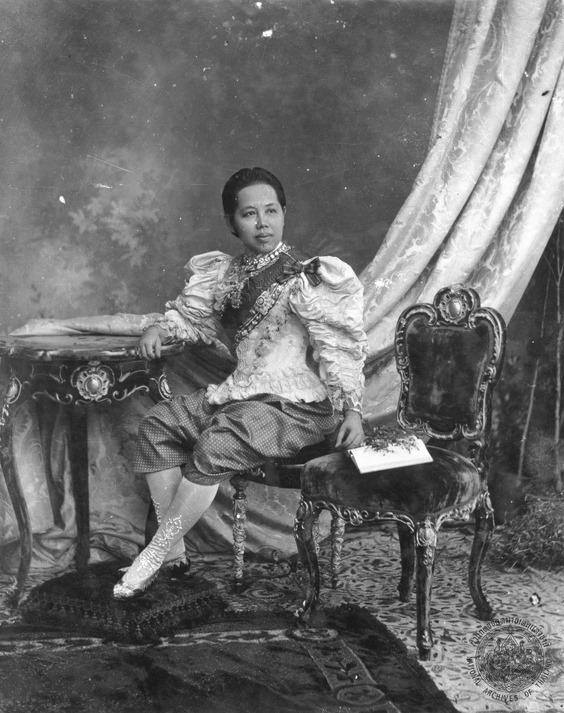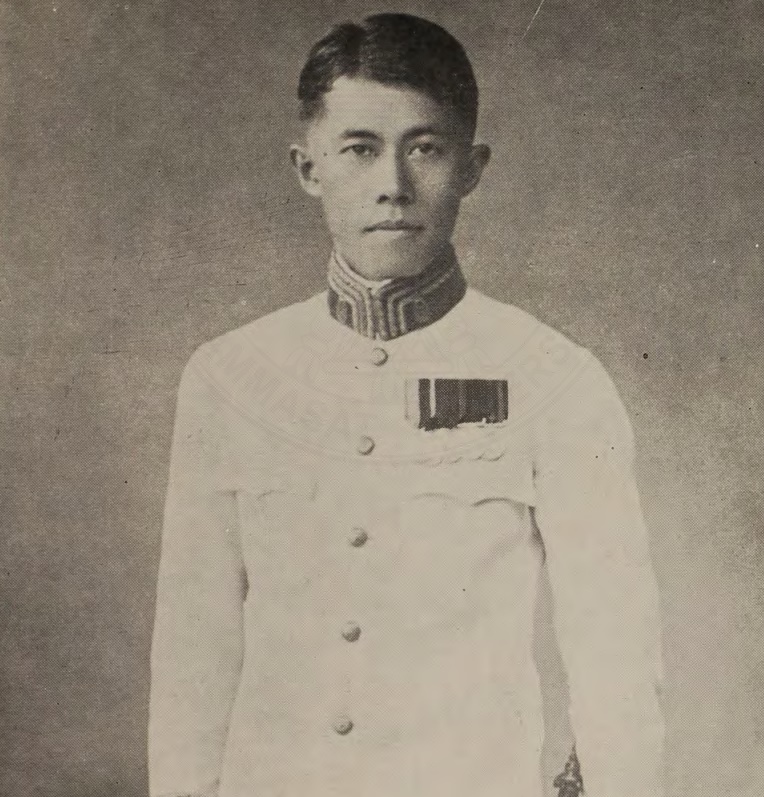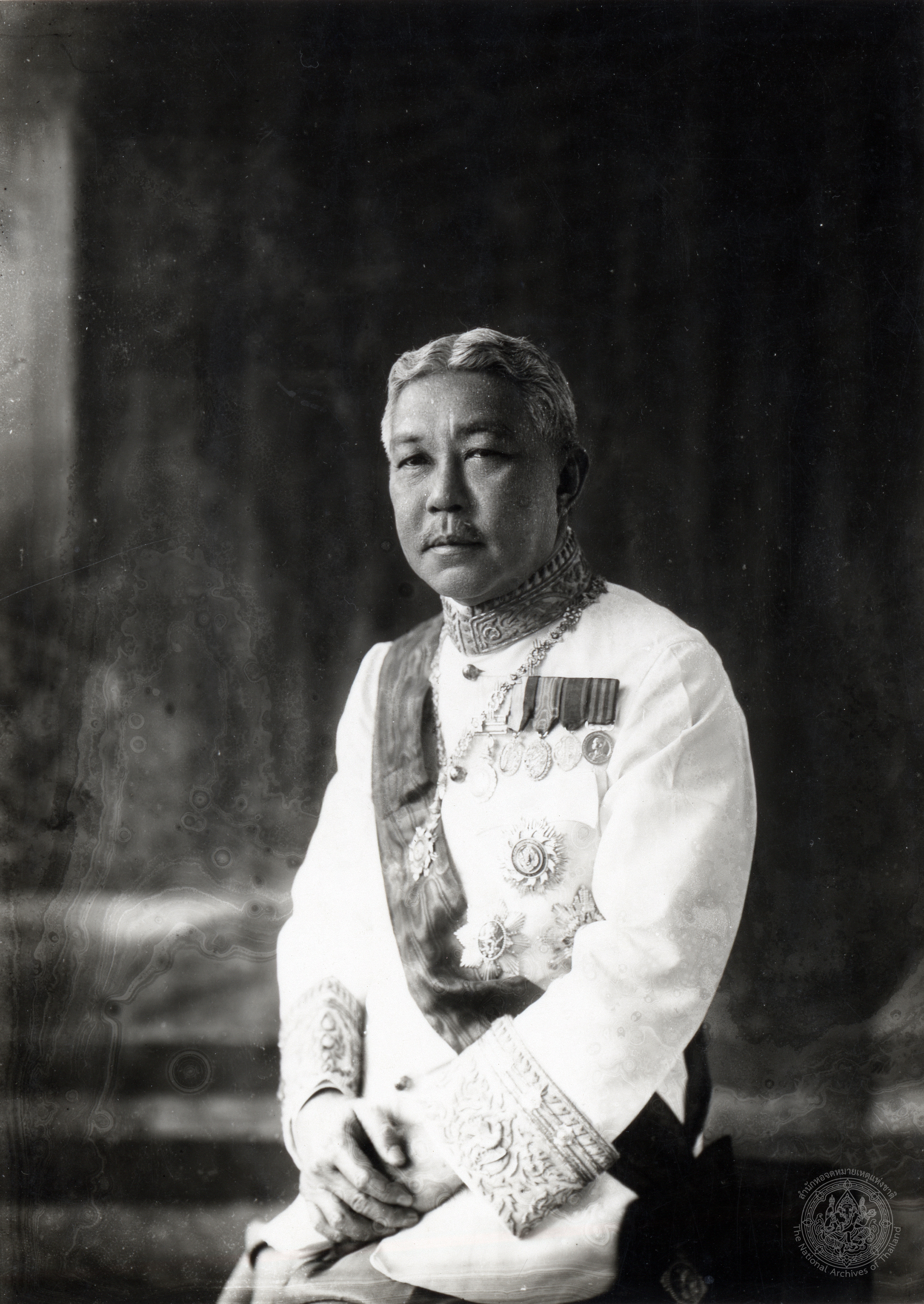- Bang Phlat District 1
- Bangkok Trams 1
- Charoen Krung Road 2
- Clock Tower (Replica) 1
- Memorial Bridge 3
- Ming Muang Market 1
- Museum Siam 3
- Phra Ratchawang Metropolitan Police Station 4
- Poh-Chang School 2
- Prince Theatre 2
- Rattanakosin Historic Area 13
- Royal Gardens 2
- Sala Chalermkrung Royal Theatre 2
- Saranrom Park 2
- Suankularb Wittayalai School 2
- Thonburi Area 1
- Wat Liab Power Plant 3
- Architectural Heritage 10
- Arts and Crafts Education 1
- Bureaucratic Reform 2
- Cement Industry in Siam 2
- Cinema and Theatre 2
- Civil Service Training 1
- Commemoration of Rattanakosin 150 Years 4
- Commemoration of Rattanakosin 200 Years 1
- Cultural Modernisation 3
- Cultural Tourism 1
- Demolished Sites 3
- Economic and Fiscal Reformers 2
- Education and Learning 6
- Education Reform in Siam 3
- Engineering & Technology 1
- Entertainment Culture 5
- Establishment of Modern Ministries 2
- European Architects in Siam 2
- European Influence in Education 2
- European-Style Shophouses 2
- Fashion and Textile 1
- Foreigners in Siamese Service 5
- Gender Equality in Siam 1
- Girls' Education 2
- Infrastructure Development 8
- Institutional Development 1
- Lakhon Phanthang (Mixed-Theatre) 2
- Modern State-Building 11
- Monarchs 4
- Monuments 3
- National Artists & Designers 1
- Nobles and Senior Officials 1
- Nursing and Midwifery 1
- Philanthropy and Patronage 1
- Police Reform in Siam 3
- Power Generation in Siam 1
- Public Health and Social Welfare 1
- Public Parks and Urban Life 2
- Public Security and Order 2
- Public Transport History 1
- Public Utilities 1
- Riverside Market Place 1
- Royal Family (non-monarchs) 4
- Royal Women 1
- Science and Technology 2
- Thai and Applied Arts 3
- Thai Architects 2
- Thai Khon Performance 1
- Thai Red Cross Society 1
- Thai Theatre History 2
- Theatre and Performing Arts 2
- Timekeeping in Siam 1
- Trade and Commerce 2
- Uniform Design 1
- Urban Designers 1
- Urban Governance 1
- Urban Green Spaces 2
- Urban Life and Markets 3
- Urban Planning and Landscape 8
- Wartime Destruction and Recovery 2
- Western Influence in Siam 20
- Western Technology 3
- Women’s Empowerment 2
- Arthur John Alexander Jardine 2
- Captain Samuel Joseph Bird Ames 2
- Chaophraya Mahinthrasakthamrong 2
- Emilio Giovanni Gollo 3
- Henry Alabaster 3
- King Chulalongkorn 5
- King Mongkut 2
- King Prajadhipok 2
- King Vajiravudh 2
- Mario Tamagno 4
- Mom Chao Samaichaloem Kritakara 2
- Prince Chantaburi Naruenat 2
- Prince Kamphaengphet Akkarayothin 2
- Prince Narisara Nuvadtivongs 2
- Queen Saovabha Phongsri 2
Photo : 30 Records
Museum Siam (Former Ministry of Commerce Building)
Photo
Museum Siam, Architectural Heritage, Economic and Fiscal Reformers, Establishment of Modern Ministries, Modern State-Building, Trade and Commerce, Western Influence in Siam, Reign of King Rama VI, Emilio Giovanni Gollo, Mario Tamagno, Prince Chantaburi Naruenat
Museum Siam, housed in the former Ministry of Commerce building, is a striking example of early 20th-century Western classical architecture in Bangkok. Originally completed in 1922, the building reflects the modernisation of Siam through both its design and its role in international trade administration.
King Prajadhipok (King Rama VII)
Photo
Commemoration of Rattanakosin 150 Years, Education and Learning, Entertainment Culture, Monarchs, Urban Planning and Landscape, Western Influence in Siam, Reign of King Rama VII, King Prajadhipok
King Prajadhipok (King Rama VII) (1893–1941) was the seventh monarch of the Chakri dynasty, reigning from 26 November 1925 until his abdication on 2 March 1935. His nine-year reign was marked by significant political, social, and cultural changes, as Siam navigated the global economic depression and transitioned towards constitutional monarchy.
Mario Tamagno
Photo
Museum Siam, Architectural Heritage, European Architects in Siam, Foreigners in Siamese Service, Modern State-Building, Western Influence in Siam, Mario Tamagno
Mario Tamagno (1877 – 1941) was an Italian architect who served under contract in Siam’s Department of Public Works, overseeing the design of major Western-style buildings during the late reign of King Rama V and King Rama VI.
The Old Siam Plaza (formerly Ming Muang Market)
Photo
Ming Muang Market, Rattanakosin Historic Area, Commemoration of Rattanakosin 150 Years, Demolished Sites, Fashion and Textile, Urban Life and Markets, Western Influence in Siam, Reign of King Rama VI, Mario Tamagno
Ming Muang Market, designed by Italian architect Mario Tamagno and opened in 1932, was a modern textile market in late King Vajiravudh’s reign. Inspired by Middle Eastern-style clothing bazaars, it served as a hub for fast, quality tailoring in Bangkok. Today, the site has transformed into “The Old Siam Plaza,” blending nostalgic atmosphere with modern commerce.
Chaophraya Mahinthrasakthamrong (Peng Phengkhlun)
Photo
Prince Theatre, Cultural Modernisation, Entertainment Culture, Lakhon Phanthang (Mixed-Theatre), Nobles and Senior Officials, Thai Theatre History, Theatre and Performing Arts, Western Influence in Siam, Reign of King Rama IV, Reign of King Rama V, Chaophraya Mahinthrasakthamrong
A senior nobleman of Siam during the 19th century, Chaophraya Mahinthrasakthamrong (1821–1894) was a pioneer of modern Thai theatre, introducing Western theatrical forms and aesthetics to Bangkok and creating the innovative Lakhon Phanthang (“hybrid theatre”) style.
Prince Theatre
Photo
Prince Theatre, Cinema and Theatre, Demolished Sites, Entertainment Culture, Lakhon Phanthang (Mixed-Theatre), Thai Theatre History, Theatre and Performing Arts, Western Influence in Siam, Reign of King Rama IV, Chaophraya Mahinthrasakthamrong
The Prince Theatre, built during the reign of King Rama IV, was the first theatre in Bangkok influenced by Western architecture and performance styles. Founded by Chaophraya Mahinthrasakdithamrong, it combined traditional Thai lakhon nok with Western elements, creating a novel genre known as Lakhon Phanthang.
Bangkok Trams
Photo
Bangkok Trams, Wat Liab Power Plant, Infrastructure Development, Public Transport History, Western Influence in Siam, Reign of King Rama V
The Bangkok tram system operated from 1888 to 1968, making Thailand the second country in the region to adopt trams for public transport. Initially horse-drawn, it was later electrified, transforming the city’s mobility and urban landscape.
Henry Alabaster
Photo
Charoen Krung Road, Royal Gardens, Saranrom Park, Foreigners in Siamese Service, Infrastructure Development, Modern State-Building, Public Parks and Urban Life, Urban Green Spaces, Urban Planning and Landscape, Reign of King Rama V, Henry Alabaster
Henry Alabaster (1836–1884) played an important role in introducing Western knowledge and technology to Siam. He contributed significantly to the development of public works, transportation, communication, education, and public parks. Saranrom Park is one example of his vision for public spaces to support civic and cultural development alongside the country’s modernisation.
Arthur John Alexander Jardine
Photo
Phra Ratchawang Metropolitan Police Station, Foreigners in Siamese Service, Police Reform in Siam, Uniform Design, Western Influence in Siam, Arthur John Alexander Jardine
Arthur John Alexander Jardine (1861–unknown) was a British officer from the Burma Police who became Director of the Siamese Police. He was responsible for maintaining order, suppressing crime, and modernising the police force with Western practices and training methods.
Emilio Giovanni Gollo
Photo
Museum Siam, Phra Ratchawang Metropolitan Police Station, Cement Industry in Siam, Engineering & Technology, Foreigners in Siamese Service, Infrastructure Development, Emilio Giovanni Gollo
Emilio Giovanni Gollo (1873–1934) was an Italian engineer who served as chief engineer at the Department of Public Works in Siam. He played an important role in bringing European engineering knowledge and technology to Siam, shaping the country’s modern architecture and infrastructure.
Phra Ratchawang Metropolitan Police Station
Photo
Phra Ratchawang Metropolitan Police Station, Rattanakosin Historic Area, Architectural Heritage, European Architects in Siam, Institutional Development, Modern State-Building, Police Reform in Siam, Public Security and Order, Urban Governance, Reign of King Rama VI, Arthur John Alexander Jardine, Captain Samuel Joseph Bird Ames, Emilio Giovanni Gollo, Mario Tamagno
Western-style policing began in Siam during King Rama IV’s reign, known at the time as pontrawen (patrol officers). The Phra Ratchawang Metropolitan Police Station, originally located near Tha Tian Market, was later relocated to its current site. The building was designed by Italian architect Mario Tamagno, who also designed the Ministry of Commerce building behind it. In fact, the police station was completed around seven years before the Ministry building.
Prince of Kamphaengphet Akkarayothin
Photo
Memorial Bridge, Infrastructure Development, Modern State-Building, Royal Family (non-monarchs), Urban Designers, Urban Planning and Landscape, Reign of King Rama VII, Prince Kamphaengphet Akkarayothin
Prince of Kamphaengphet Akkarayothin (Prince Burachat Chaiyakorn, 1881–1936) played a leading role in initiating and overseeing the construction of the Memorial Bridge (Phra Phuttha Yodfa Bridge), which connected Bangkok and Thonburi to improve trade, transport, and commemorate the 150th anniversary of Bangkok.
Prince Narisara Nuvadtivongs
Photo
Memorial Bridge, Architectural Heritage, Monuments, National Artists & Designers, Royal Family (non-monarchs), Thai and Applied Arts, Thai Architects, Western Influence in Siam, Reign of King Rama V, Reign of King Rama VI, Reign of King Rama VII, Prince Narisara Nuvadtivongs
Prince Narisara Nuvadtivongs (1863–1947) was a master artist renowned for his skill in painting, architecture, music, and literature. Known as the Chief Artist of Siam and Somdet Khru, he designed temples, roads, and bridges, blending Western and Thai artistic traditions seamlessly. His notable works include the layout of the Memorial Bridge and the design of the King Rama I Monument.
Captain Samuel Joseph Bird Ames
Photo
Phra Ratchawang Metropolitan Police Station, Foreigners in Siamese Service, Modern State-Building, Police Reform in Siam, Public Security and Order, Western Influence in Siam, Captain Samuel Joseph Bird Ames
Captain Samuel Joseph Bird Ames played a key role in establishing the first Western-style police force in Bangkok in 1860. This initiative came at a time when European powers were expanding in Asia, and domestic law enforcement was seen as essential to national defence and diplomacy.
Sala Chalermkrung Royal Theatre
Photo
Rattanakosin Historic Area, Sala Chalermkrung Royal Theatre, Architectural Heritage, Cinema and Theatre, Commemoration of Rattanakosin 150 Years, Cultural Modernisation, Entertainment Culture, Thai Khon Performance, Western Technology, Reign of King Rama VII, Mom Chao Samaichaloem Kritakara
Sala Chalermkrung Royal Theatre is a historic theatre on Charoen Krung Road in Bangkok. It was built to celebrate the 150th anniversary of the city during the reign of King Prajadhipok (Rama VII). It was the first cinema in Thailand with air conditioning and a modern design. Today, it is still in use as a venue for classical dance, theatre, and special film events.
Charoen Krung Road
Photo
Charoen Krung Road, European-Style Shophouses, Infrastructure Development, Trade and Commerce, Urban Planning and Landscape, Western Influence in Siam, Reign of King Rama IV, Reign of King Rama V, Henry Alabaster, King Chulalongkorn, King Mongkut
Charoen Krung was Bangkok’s first modern road, constructed between 1861–1864 during the reign of King Mongkut (Rama IV). Designed by Henry Alabaster, it stretched over 8.5 km along the eastern bank of the Chao Phraya River, marking a shift from canal-based to road-based urban development.
Tha Tien Market
Photo
Rattanakosin Historic Area, Cultural Tourism, European-Style Shophouses, Riverside Market Place , Urban Life and Markets, Urban Planning and Landscape, Reign of King Rama V
Tha Tien Market, nestled opposite Wat Pho and close to the Grand Palace, has long been one of Bangkok’s oldest riverfront trading hubs. It began as a busy dockside market in the Ayutthaya, Thonburi, and early Rattanakosin periods. In the 20th century, it changed into a planned market with European-style shophouses. Later, the area changed again. The market moved away from wholesale trade and became a place for culture and tourism instead.
Wat Liab Power Plant
Photo
Rattanakosin Historic Area, Wat Liab Power Plant, Infrastructure Development, Power Generation in Siam, Public Utilities, Wartime Destruction and Recovery, Western Influence in Siam, Western Technology, Reign of King Rama V, Reign of King Rama VI
The Siam Electricity Company was founded in 1898, with its power plant located on the grounds of Wat Ratchaburana Ratchaworawihan (commonly known as Wat Liab). This steam-powered plant burned wood, coal, oil and rice husks as fuel and became known as the “Wat Liab Power Plant.” It brought electric light to the Phra Nakhon and Thonburi areas, providing power for streets, royal palaces, and key public buildings.
Poh-Chang Academy of Arts
Photo
Poh-Chang School, Rattanakosin Historic Area, Arts and Crafts Education, Education and Learning, Thai and Applied Arts, Wartime Destruction and Recovery, Western Influence in Siam, Reign of King Rama V, Reign of King Rama VI, King Chulalongkorn, King Vajiravudh
Poh-Chang Academy of Arts was founded in 1913 during the reign of King Vajiravudh (King Rama VI), building upon the foundations laid earlier by the “Wood Carving Division” and the “Craftsmen’s Guild” established under King Chulalongkorn (King Rama V). Conceived as a means to preserve traditional Thai craftsmanship while embracing modern knowledge, the school played a pivotal role in shaping modern Thai art. It brought together Thai artisans and pioneering foreign instructors such as Frederick Samuel Harrop, who introduced Western artistic techniques, and Prince Chudadhut Dharadilok, the first commandant who established its formal curriculum and structure. Today, Poh-Chang is part of Rajamangala University of Technology Rattanakosin and remains a symbol of artistic training where Thai cultural heritage and international approaches continue to converge.
Rajini School
Photo
Rattanakosin Historic Area, Suankularb Wittayalai School, Architectural Heritage, Education Reform in Siam, Girls' Education, Women’s Empowerment, Reign of King Rama V, Reign of King Rama VI, King Chulalongkorn, Queen Saovabha Phongsri
Rajini School, founded in 1904 by Queen Saovabha Phongsri, was one of the first schools in Thailand to provide formal education for girls. Established to give Thai women the opportunity to learn, develop skills and build good character, it has played a leading role in shaping education for women in modern Thailand.
Suankularb Wittayalai School
Photo
Rattanakosin Historic Area, Suankularb Wittayalai School, Architectural Heritage, Civil Service Training, Education and Learning, European Influence in Education, Modern State-Building, Reign of King Rama V, King Chulalongkorn
Suankularb Wittayalai School, founded during the reign of King Chulalongkorn (King Rama V), was the first royal school in Thailand. It was established as part of the King’s vision to modernise the country through education, ensuring that young people, nobles, officials, and citizens gained the knowledge and discipline needed to serve the nation in a changing world.
Saranrom Park
Photo
Rattanakosin Historic Area, Royal Gardens, Saranrom Park, Public Parks and Urban Life, Urban Green Spaces, Urban Life and Markets, Western Influence in Siam, Reign of King Rama IV, Reign of King Rama V, Reign of King Rama VI, Henry Alabaster, King Chulalongkorn, King Vajiravudh
Originally a royal private garden, Saranrom Park evolved over time into a botanical garden, a zoo, and a venue for social and political activities. It reflects Siam’s transition from a traditional kingdom into a more open and modern Thai society.
Memorial Bridge (Phra Phuttha Yodfa Bridge)
Photo
Memorial Bridge, Rattanakosin Historic Area, Architectural Heritage, Commemoration of Rattanakosin 150 Years, Infrastructure Development, Monuments, Urban Planning and Landscape, Western Influence in Siam, Western Technology, Reign of King Rama VII, King Prajadhipok, Prince Narisara Nuvadtivongs, Prince Kamphaengphet Akkarayothin
The Memorial Bridge (Phra Phuttha Yodfa Bridge), commonly known as Saphan Phut, was the first bascule steel bridge in Bangkok. Opened in 1932 during the reign of King Prajadhipok (King Rama VII) to mark the 150th anniversary of Rattanakosin, it links the historic Phra Nakhon district on the east bank with Thonburi on the west bank. Beyond its function as a river crossing, the bridge symbolises the expansion of Bangkok across the Chao Phraya and the embrace of modern engineering that transformed the capital into a modern city in the early 20th century.
Replica of the Royal Clock Tower
Photo
Clock Tower (Replica), Rattanakosin Historic Area, Architectural Heritage, Commemoration of Rattanakosin 200 Years, Demolished Sites, Monuments, Science and Technology, Western Influence in Siam, Reign of King Rama IV, King Mongkut
Replica of the Royal Clock Tower on Sanam Chai Road, built in 1982 to commemorate the 200th anniversary of Rattanakosin. It honours the original clock tower once located in the Grand Palace, a 19th century landmark of modernisation during the reign of King Mongkut (Rama IV).
King Mongkut (King Rama IV)
Photo
Modern State-Building, Monarchs, Science and Technology, Timekeeping in Siam, Urban Planning and Landscape, Western Influence in Siam, Reign of King Rama IV
King Mongkut (1804–1868), the fourth monarch of the Chakri dynasty, reigned for 17 years during a period of dramatic change. He is remembered for opening Siam to the wider world, modernising its administration, infrastructure, and knowledge, and laying the foundations for a more internationally engaged kingdom.
King Chulalongkorn (King Rama V)
Photo
Bureaucratic Reform, Education and Learning, Education Reform in Siam, Infrastructure Development, Modern State-Building, Monarchs, Urban Planning and Landscape, Western Influence in Siam, Reign of King Rama V
King Chulalongkorn (1853–1910), the fifth monarch of the Chakri dynasty, reigned for 42 years during a period of intense pressure from colonial powers. His reign was marked by major reforms that transformed Siam into a modern state, aiming to ensure that the kingdom was recognised as civilised and independent by Western nations.
King Vajiravudh (King Rama VI)
Photo
Poh-Chang School, Cement Industry in Siam, Education and Learning, Modern State-Building, Monarchs, Thai and Applied Arts, Western Influence in Siam, Women’s Empowerment, Reign of King Rama VI
King Vajiravudh (1881–1925), the sixth monarch of the Chakri dynasty, ruled Siam during a period marked by both external and internal challenges. These included the First World War, economic difficulties, and continued reforms following the reign of his father, King Chulalongkorn. His reign is noted for significant contributions in administration, education, health, and the arts.
Queen Saovabha Phongsri
Photo
Education and Learning, Education Reform in Siam, European Influence in Education, Gender Equality in Siam, Girls' Education, Nursing and Midwifery, Philanthropy and Patronage, Public Health and Social Welfare, Royal Women, Thai Red Cross Society, Reign of King Rama V, Reign of King Rama VI, Queen Saovabha Phongsri
Queen Saovabha Phongsri (1854–1919), known as the Queen Mother of Thailand, played a pivotal role in pioneering women’s education in Siam. At a time when women had limited access to learning, she championed the idea that the nation’s progress depended on the education of both men and women. She promoted women’s intellectual and moral development, supporting education in languages, science, mathematics, and ethics.
Mom Chao Samaichaloem Kritakara
Photo
Sala Chalermkrung Royal Theatre, Architectural Heritage, Cultural Modernisation, Entertainment Culture, Royal Family (non-monarchs), Thai Architects, Western Influence in Siam, Reign of King Rama VI, Reign of King Rama VII, Mom Chao Samaichaloem Kritakara
M.C. Samaichaloem Kritakara (1895–1967) was a pioneering Thai architect and member of the royal family. Educated in France under a royal scholarship, he played a vital role in introducing Western architectural principles into Siam during a time of rapid modernisation. His most iconic works include the Sala Chalermkrung Royal Theatre and Bangkok City Hall.
Prince Chantaburi Naruena
Photo
Bureaucratic Reform, Economic and Fiscal Reformers, Establishment of Modern Ministries, Modern State-Building, Royal Family (non-monarchs), Reign of King Rama V, Reign of King Rama VI, Prince Chantaburi Naruenat
Prince Chantaburi Naruenat (1874–1931), born Prince Kitiyakara Voralaksana, was a son of King Chulalongkorn (King Rama V). Educated in England, he became a leading moderniser of public administration, particularly in finance and trade, and is recognised as the founder and first Minister of the Ministry of Commerce in Thailand.
